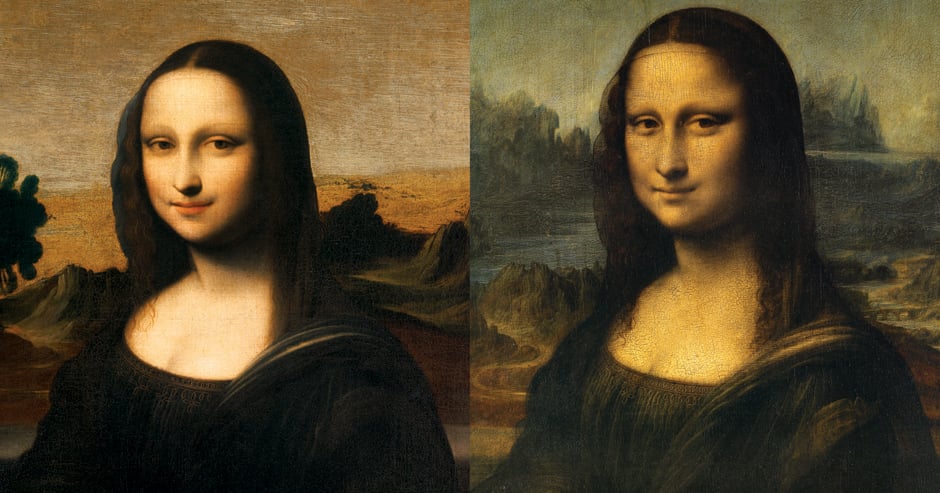Art & Exhibitions
A Second Mona Lisa Goes on View in Turin—But Did Leonardo Actually Paint It?
Experts are divided on whether the "Isleworth Mona Lisa" is an earlier version of the famed portrait in the Louvre Museum.

Experts are divided on whether the "Isleworth Mona Lisa" is an earlier version of the famed portrait in the Louvre Museum.

Devorah Lauter

It’s a question that has eluded art lovers for centuries. Did Leonardo da Vinci paint another, similar, but slightly younger-looking portrait of the Mona Lisa with her famed, captivating smile, a decade before the final version that now hangs in the Louvre?
The Swiss-based Mona Lisa Foundation certainly thinks so. The foundation, which represents the private owners of the painting is exhibiting the work in Turin’s Promotrice delle Belle Arti gallery, in an exhibition titled “The First Mona Lisa,” until May 26, 2024.
“We have proved beyond reasonable doubt that Leonardo painted two Mona Lisas and this is the only candidate to be the second,” said Joël Feldman, general secretary of the Mona Lisa Foundation, speaking to The Times.
The foundation said the painting was likely made around 1505, and depicts a similarly positioned woman, believed to be based on the Florentine noblewoman Lisa Gherardini. A pastoral background can also be seen in this “earlier” work, however, it was left unfinished and the subject is framed by two columns, which do not appear in Leonardo’s most famous painting.
Better known as the “Isleworth Mona Lisa,” the controversial painting’s previous owner, Hugh Blaker acquired it in 1913, believing it to be the work of the Renaissance master, and brought it to his home in West London. In 1936, the American gallery owner and collector Henry Pulitzer acquired it, and long-argued that it was an authentic Leonardo. The portrait was eventually purchased by its current owners, a consortium of investors who have periodically displayed the painting.
The exhibition, which includes multimedia displays cataloging decades of the foundation’s research into the portrait’s origins, along with background about Leonardo’s life and the Italian Renaissance period, is an “opportunity to also present the massive strides that have been made in the past few years to cement the attribution of the work to Leonardo,” Feldman said in a statement.
The foundation has notably worked with scientists, such as John Asmus, at the University of California, San Diego, who conducted tests strongly suggesting the same artists painted the faces of both women.
However, renowned Leonardo expert Martin Kemp, an emeritus professor of art history at the University of Oxford, will have none of it. The foundation is “in a phase of trying to promote [the portrait] again,” a move that Kemp told Artnet News is common for syndicates attempting to increase the value of a work—an idea the foundation has denied in the past.
Kemp insisted there was “no indication” the work is dated prior to the Mona Lisa, which is believed to have been painted between 1503 and 1517, and the fact that the portrait was done on canvas, when Leonardo was known to only paint on wooden surfaces, was a major clue that it is a copy.
Additionally, Kemp’s examination of the “earlier” work led him to the conclusion it was done by looking at a “finished picture, rather than what we know is under the surface.” For instance, Leonardo used layers of binder with small amounts of pigment to slowly build a “very elusive,” soft effect, which is evident in how the master avoided clear, or sharp edges when rendering his subjects.
The Swiss foundation’s “earlier” version, “does a shot at doing this softness… but it doesn’t have this sort of light passing through all these layers of glaze,” Kemp said, adding that Leonardo’s visual technique is notoriously difficult to imitate. Asked if he had any of his own ideas about who could have painted the mysterious, second portrait, he said he had no theories as to its origin, noting that identifying authors of copied artworks was “almost impossible.”
More Trending Stories:
How an Exclusive NYC Cult Influenced the 1970’s Art Scene
A Rare Soulages Lithograph Possibly Worth $30,000 Sells For $130 in Facebook Marketplace Mishap
Masterpiece or Hot Mess? Here Are 7 Bad Paintings by Famous Artists
Is There a Hat Better Than Napoleon’s? We Rank Art History’s 5 Most Iconic Chapeaux